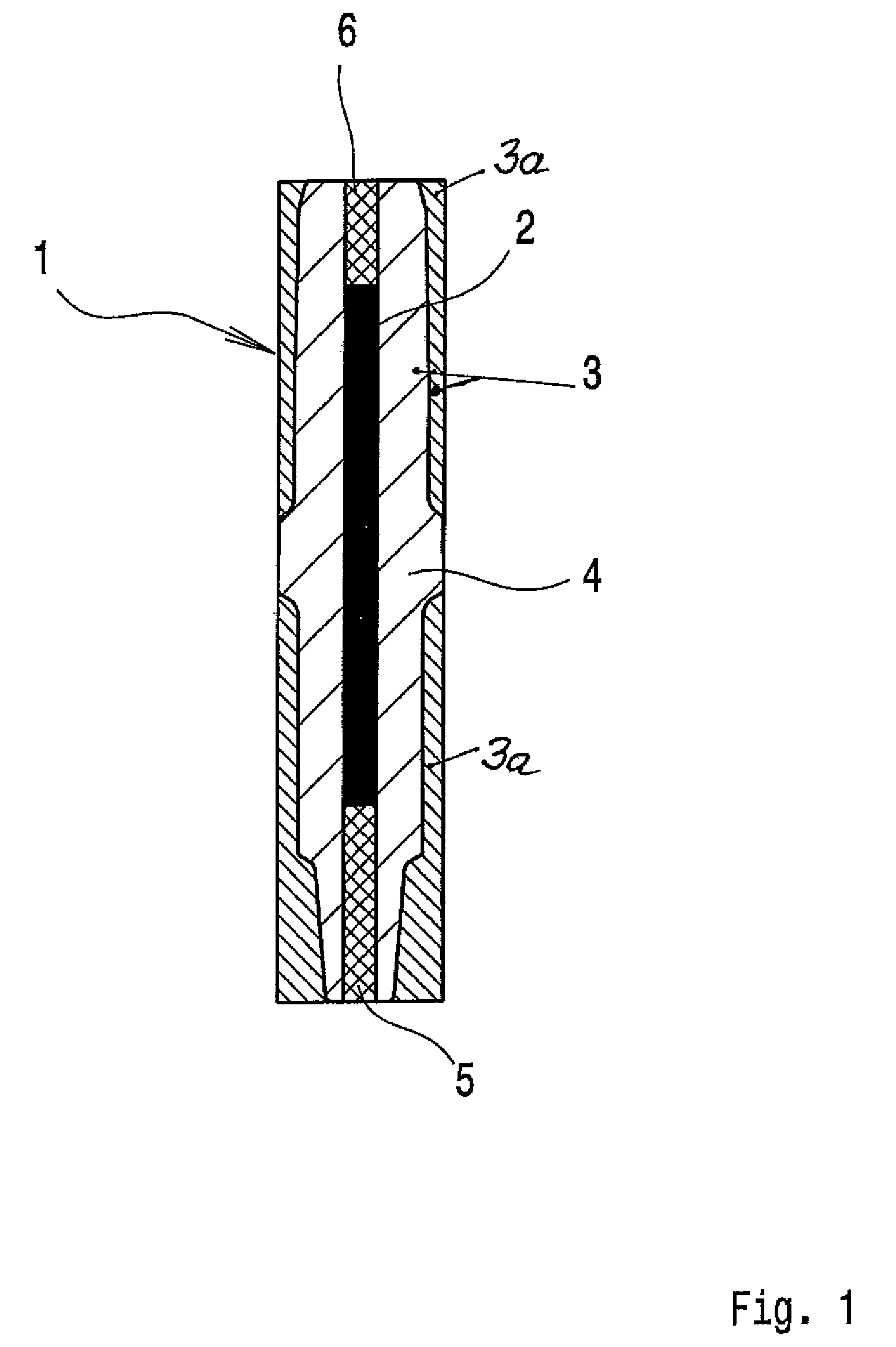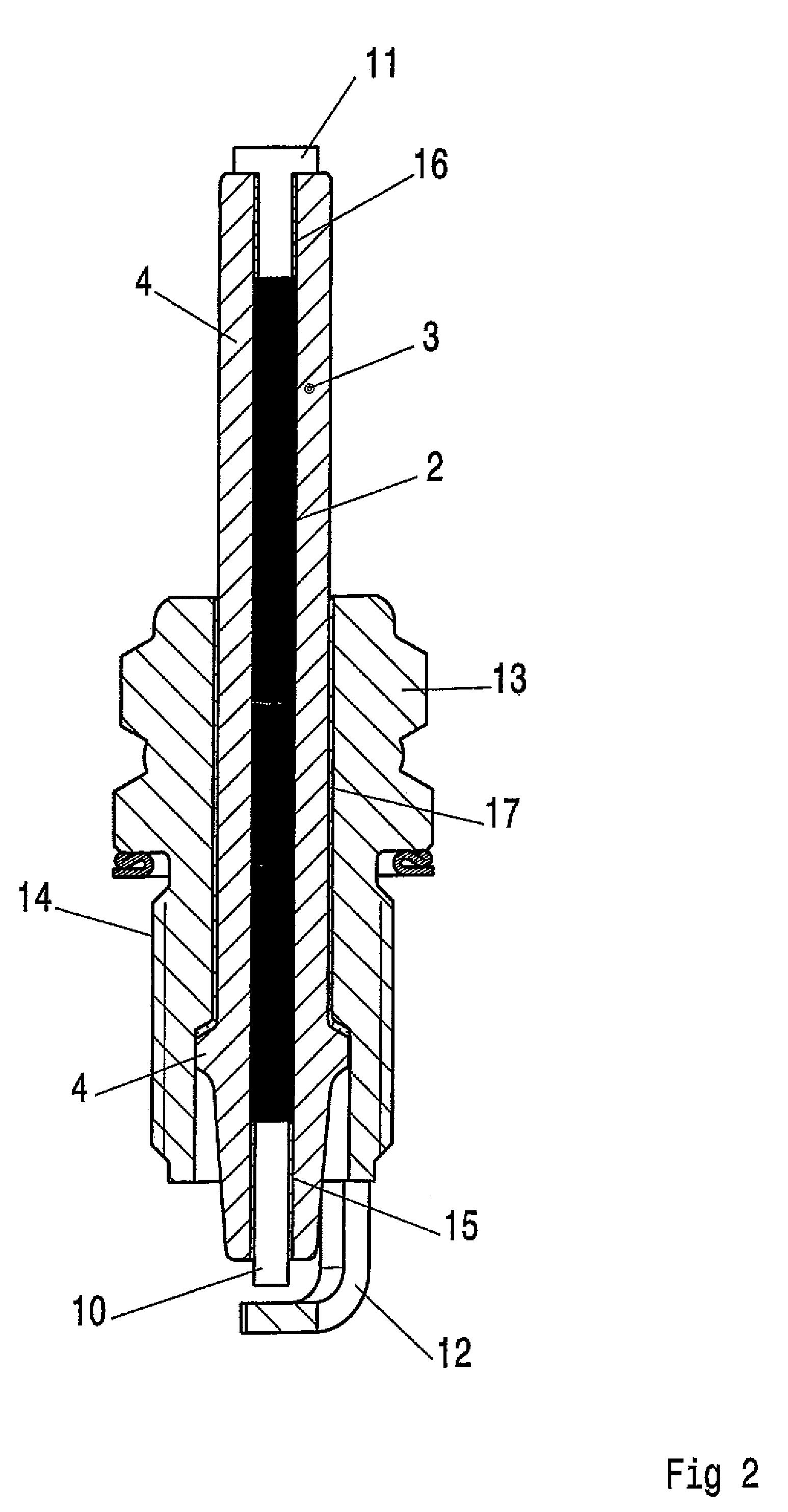Spark plug and method for production of a spark plug
a technology of spark plugs and spark plugs, which is applied in the manufacture of spark plugs, spark plugs, machines/engines, etc., can solve the problems of limiting the service life of spark plugs, increasing the risk of shunt formation, and gas leakage out of combustion chambers through inadequate sealing areas of spark plugs, so as to meet the high demands placed on spark plugs more efficiently
- Summary
- Abstract
- Description
- Claims
- Application Information
AI Technical Summary
Benefits of technology
Problems solved by technology
Method used
Image
Examples
Embodiment Construction
[0014]FIG. 1 shows a co-extruded green compact 1 of cylindrical shape, comprising an electrically conductive ceramic material 2 intended to form an inner conductor at its center, and an electrically insulating ceramic material 3 enclosing the inner conductor 2. The co-extruded green compact 1 constitutes a semi-finished product for the production of a spark plug. The green compact 1 is given the length desired for a spark plug, and its outer contour is shaped so that the electrically insulating ceramic material 3 assumes the contour with a collar 4 usual for a spark plug. The outer areas 3a of the green compact 1 that are to be removed by shaping operations, for example by lathe cutting or grinding, are shown as hatched areas in FIG. 1. Due to the plasticity required for the co-extrusion process, the green compact 1 can be worked relatively easily. A hard, mechanically strong ceramic body comprising a crystalline inner conductor 2 and an insulator 3 enclosing the inner conductor are...
PUM
 Login to View More
Login to View More Abstract
Description
Claims
Application Information
 Login to View More
Login to View More - R&D
- Intellectual Property
- Life Sciences
- Materials
- Tech Scout
- Unparalleled Data Quality
- Higher Quality Content
- 60% Fewer Hallucinations
Browse by: Latest US Patents, China's latest patents, Technical Efficacy Thesaurus, Application Domain, Technology Topic, Popular Technical Reports.
© 2025 PatSnap. All rights reserved.Legal|Privacy policy|Modern Slavery Act Transparency Statement|Sitemap|About US| Contact US: help@patsnap.com



